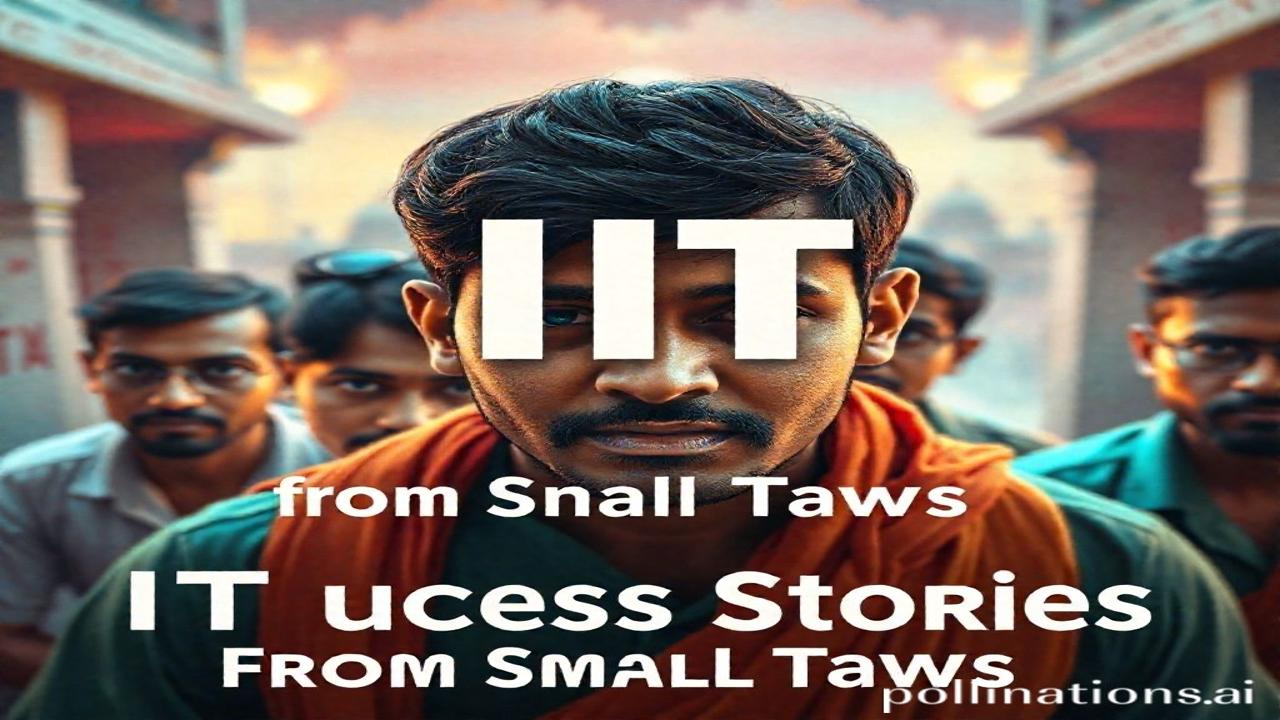Mitti ki Khushboo, IIT ka Sapna: Small Towns Shining Bright!
Kabhi kabhi lagta hai, jaise India ki dhool bhari galiyon mein, kisi purani kitaab ke pannon mein kuch sapne chhup jaate hain. Yeh sapne bade shehron ke neon lights mein nahi, balki chhote kasbon ki dim battiyo tale palte hain. Yeh sapne IIT jaane ke hain, engineers banne ke hain, aur apne parivaar aur apne gaanv ka naam roshan karne ke hain. Aaj hum unhi sapno ki baat karenge.
IIT: Ek Sapna, Ek Lakshya, Ek Jung!
What exactly is the magic of IIT? The Indian Institutes of Technology (IITs) are India’s premier engineering institutions. They aren’t just colleges; they’re tirth sthan for aspiring engineers. These institutes were established after India’s independence, primarily in the 1950s and 60s, with the vision to build a technologically self-reliant India. They were seen as the engine of growth, the shakti that would drive the nation forward.
Why is it important? IITs represent ambition, perseverance, and the desire for a better future. They symbolize the power of education to uplift communities, especially those in small towns where opportunities might seem limited. It’s about democratizing success and showcasing the talent hidden away in every corner of India. And yaar, clearing the JEE exam is like winning a mini-war!
Zameeni Sach: Ramu se lekar Rahul tak, Kahaniyan Anokhi!
Imagine a small town, say, Ballia in Uttar Pradesh. Life here revolves around farming, local markets, and a close-knit community. Now, picture a young boy, let’s call him Ramu. Ramu’s father is a farmer, his mother a homemaker. He studies in a government school with limited resources, where electricity is as unpredictable as the monsoon. But Ramu has a dream – to study at IIT.
“Beta, JEE nikalna aasan nahi hai,” his father would say, worry etched on his face. “Lekin agar mann mein ichha hai, toh sab mumkin hai,” his mother would encourage, her eyes shining with hope. Ramu would spend hours studying under the dim glow of a kerosene lamp, poring over textbooks, solving problems late into the night. He’d wake up before sunrise to practice maths, his fingers numb from the cold.
He is not alone. Consider Rahul from a small village in Bihar. His parents work as laborers. He heard about IITs from an older brother who had moved to a city for work. Inspired, Rahul borrowed books from the local library, studied in the light of street lamps, and eventually cracked the JEE. His success isn’t just his own; it’s a testament to the resilience of the human spirit, the power of dreams, and the potential hidden in every small town.
Dharohar aur Pehchan: IIT aur Bharatiyata
Even today, the IIT dream continues to fuel the aspirations of countless students from small towns. It’s a part of our Bharatiyata, our Indian identity. It represents the idea that talent can emerge from anywhere, regardless of background or location. It’s about providing equal opportunities, empowering the underprivileged, and building a more inclusive and equitable society.
You see echoes of this in initiatives like Super 30, which coaches underprivileged students from Bihar for the IIT entrance exams. These programs are more than just coaching centers; they are beacons of hope, showing that even with limited resources, dreams can be realized. The story of IIT aspirants from small towns is a reminder that true shakti lies in determination, perseverance, and the unyielding pursuit of knowledge.
Mazedar Tathya ya Bhram-Bhanjak: IIT ka Sach!
Log samajhte hain ki sirf bade shehron ke schools ke bache IIT mein jaate hain. Lekin asli sach yeh hai, that many IIT toppers come from humble backgrounds and small towns. They often lack the privileges of their urban counterparts, but they make up for it with sheer hard work and an unwavering dedication.
Another myth is that IIT is all about rote learning. While cracking the JEE requires a strong foundation in concepts, it also demands critical thinking, problem-solving skills, and a creative approach. It’s about understanding the “why” behind the “what,” and that’s something students from small towns often excel at, thanks to their resourcefulness and practical approach to life.
Drishya aur Bhavnayein: Ek IITian ki Aankhon Se
Imagine the moment Ramu or Rahul first sets foot on the IIT campus. The sheer scale of the infrastructure, the diversity of the student body, the buzz of intellectual activity – it’s a world away from the quiet, predictable life they knew in their small towns.
The air smells of new possibilities, of freedom, of a future they can shape with their own hands. The temple walls of their village may seem distant, but the values they learned there – humility, hard work, and a strong sense of community – will stay with them forever.
Antim Vichar ya Uddharan: Sapne Toh Sapne Hote Hain!
As the saying goes: “कर्मण्येवाधिकारस्ते मा फलेषु कदाचन” (Karmanye Vadhikaraste Ma Phaleshu Kadachana) – You have the right to perform your prescribed duty, but you are not entitled to the fruits of action. The IIT dream is not just about getting into a prestigious institution; it’s about the journey, the effort, and the unwavering belief in oneself. It’s about proving that dreams, no matter how ambitious, can come true, even from the smallest of towns.
And that, my friends, is the magic of India.
